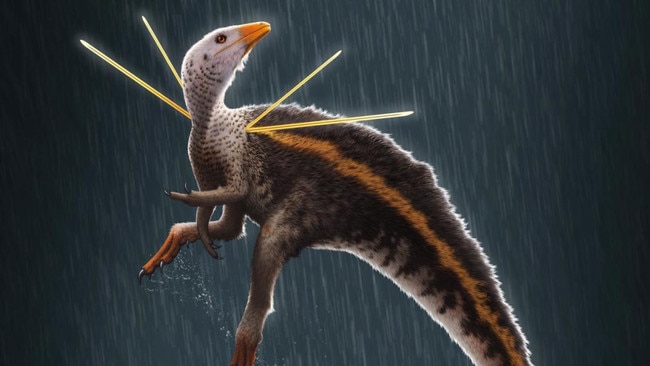Meet the hot dinosaur of Brazil
To some humans, the Ubirajara jubatus might look a little silly. To fellow therapods, though, this small dinosaur would have looked rather sexy.

To some humans, the Ubirajara jubatus might look a little silly. A short bird-like dinosaur, it has a mane up its back and odd protuberances like really long, really thin, nails extending from its neck.
To fellow therapods, though, this small dinosaur, found fossilised in Brazil, would have looked rather dashing and not a little sexy.
The unusual accoutrements displayed by the animal, which roamed the Earth 110 million years ago, are best explained not as functional adaptations but, instead, as the kind of runaway sexual selection that we see in its distant descendants such as peacocks. “It’s a little therapod, a group that includes all the big meat eaters,” Robert Smyth, from the University of Portsmouth in England, said.
As well as the criss-crossed tubes, made from keratin, it had a mane. “We believe it was connected to muscles, that allow the mane to be raised,” he said. “We’ve never seen anything like it before. It’s entirely unique in the fossil record.”
The exquisite detail they found on the fossil is thanks to an unusual fossilisation process. The therapod died in an extremely salty lagoon. There it was in effect pickled, keeping much of it intact. Then, over many years sediment was deposited on top of it and turned to stone.
Sexual selection is different from natural selection. Instead of being about evolving to aid survival, it is about evolving to attract a mate. A peacock’s tail, for instance, is a hindrance to the bird in living its life but if female peacocks prefer partners with big tails, and then make sons with extravagant tails, a feedback loop can form to make more elaborate tails. Mr Smyth, who is studying for a PhD, thinks this happened here. “It’s really hard to think of another plausible explanation for them,” he said. “If you saw a bird with features like that, you’d assume that’s what’s going on.”
The Times



To join the conversation, please log in. Don't have an account? Register
Join the conversation, you are commenting as Logout